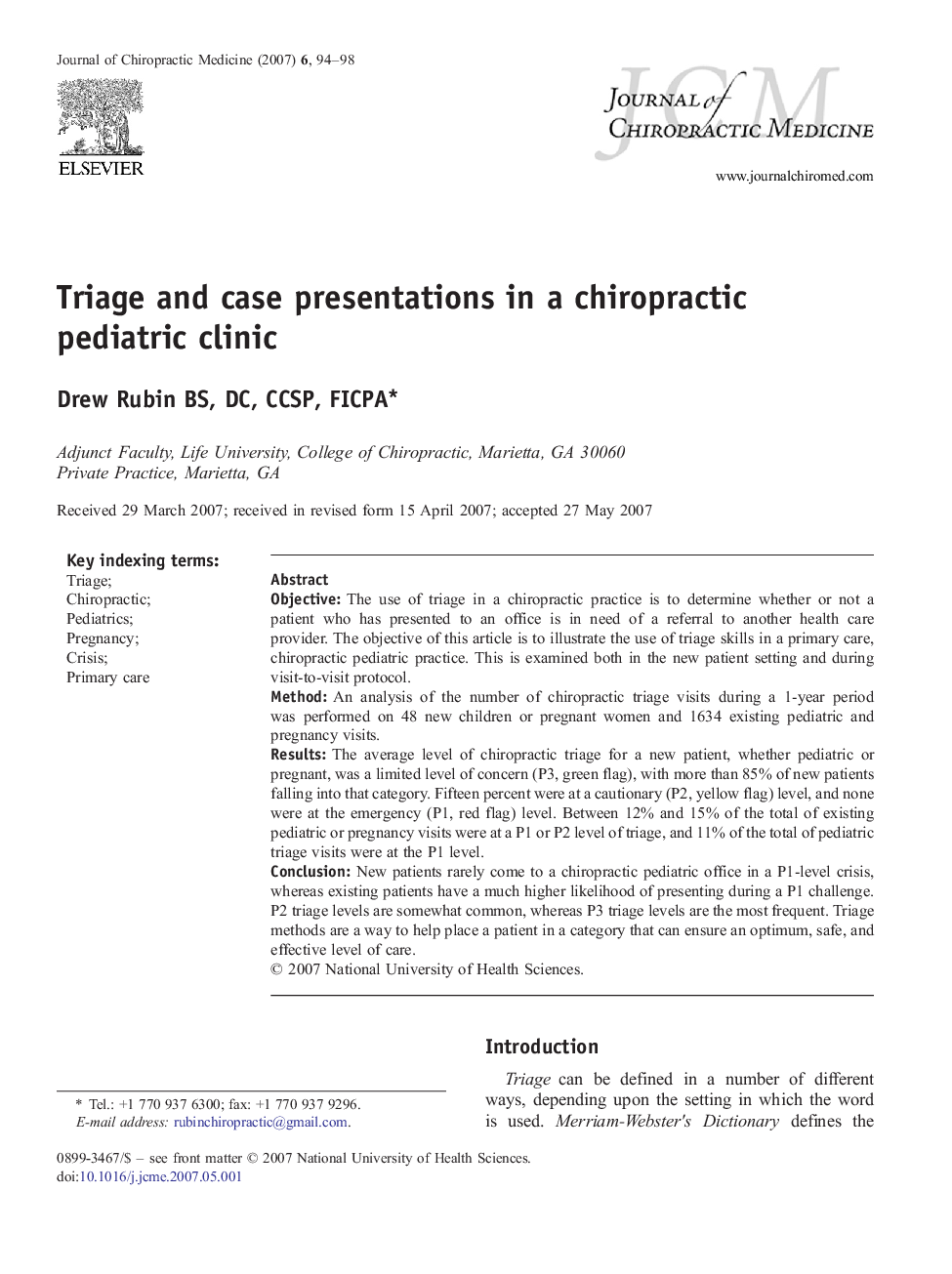| Article ID | Journal | Published Year | Pages | File Type |
|---|---|---|---|---|
| 2620281 | Journal of Chiropractic Medicine | 2007 | 5 Pages |
ObjectiveThe use of triage in a chiropractic practice is to determine whether or not a patient who has presented to an office is in need of a referral to another health care provider. The objective of this article is to illustrate the use of triage skills in a primary care, chiropractic pediatric practice. This is examined both in the new patient setting and during visit-to-visit protocol.MethodAn analysis of the number of chiropractic triage visits during a 1-year period was performed on 48 new children or pregnant women and 1634 existing pediatric and pregnancy visits.ResultsThe average level of chiropractic triage for a new patient, whether pediatric or pregnant, was a limited level of concern (P3, green flag), with more than 85% of new patients falling into that category. Fifteen percent were at a cautionary (P2, yellow flag) level, and none were at the emergency (P1, red flag) level. Between 12% and 15% of the total of existing pediatric or pregnancy visits were at a P1 or P2 level of triage, and 11% of the total of pediatric triage visits were at the P1 level.ConclusionNew patients rarely come to a chiropractic pediatric office in a P1-level crisis, whereas existing patients have a much higher likelihood of presenting during a P1 challenge. P2 triage levels are somewhat common, whereas P3 triage levels are the most frequent. Triage methods are a way to help place a patient in a category that can ensure an optimum, safe, and effective level of care.
